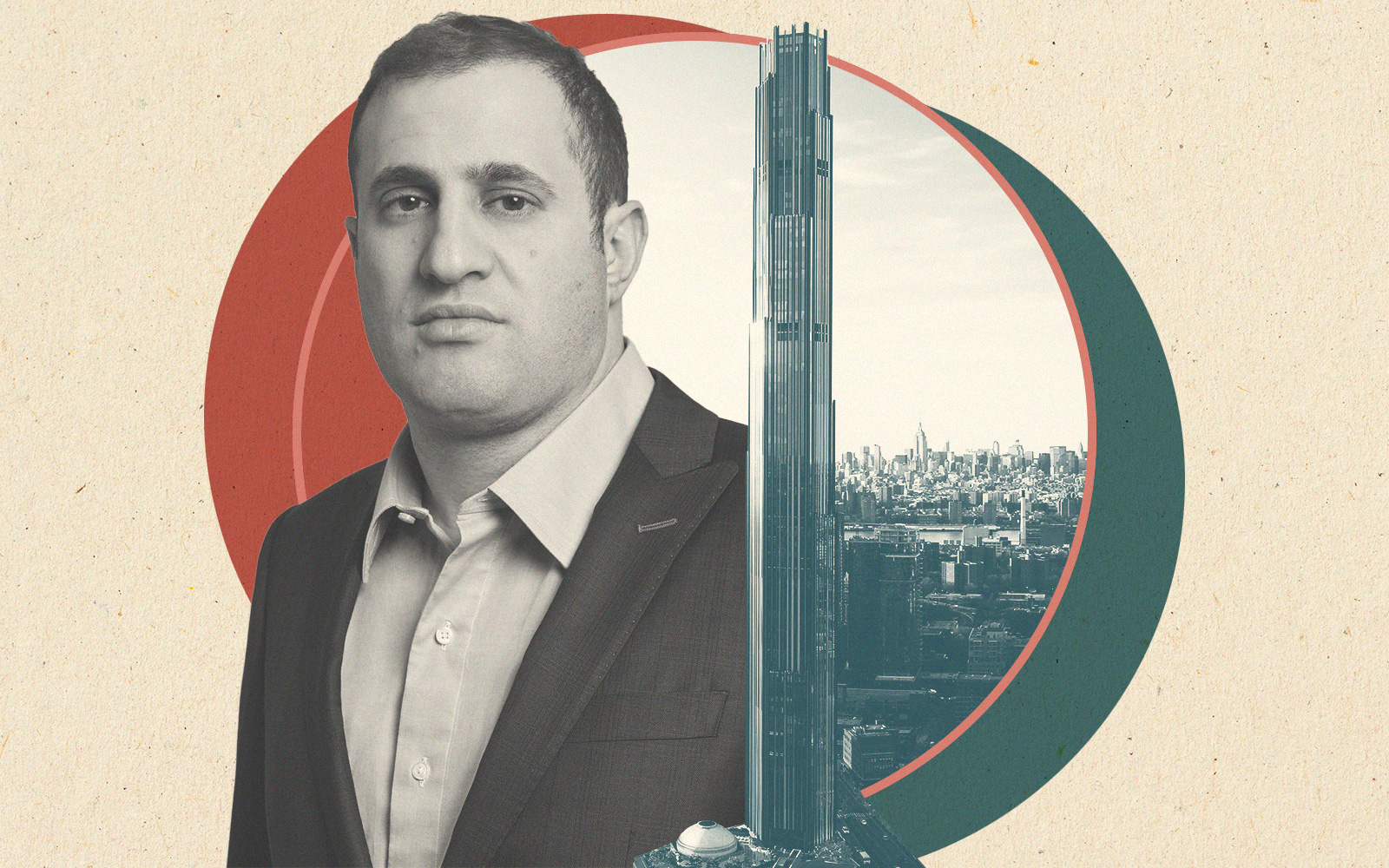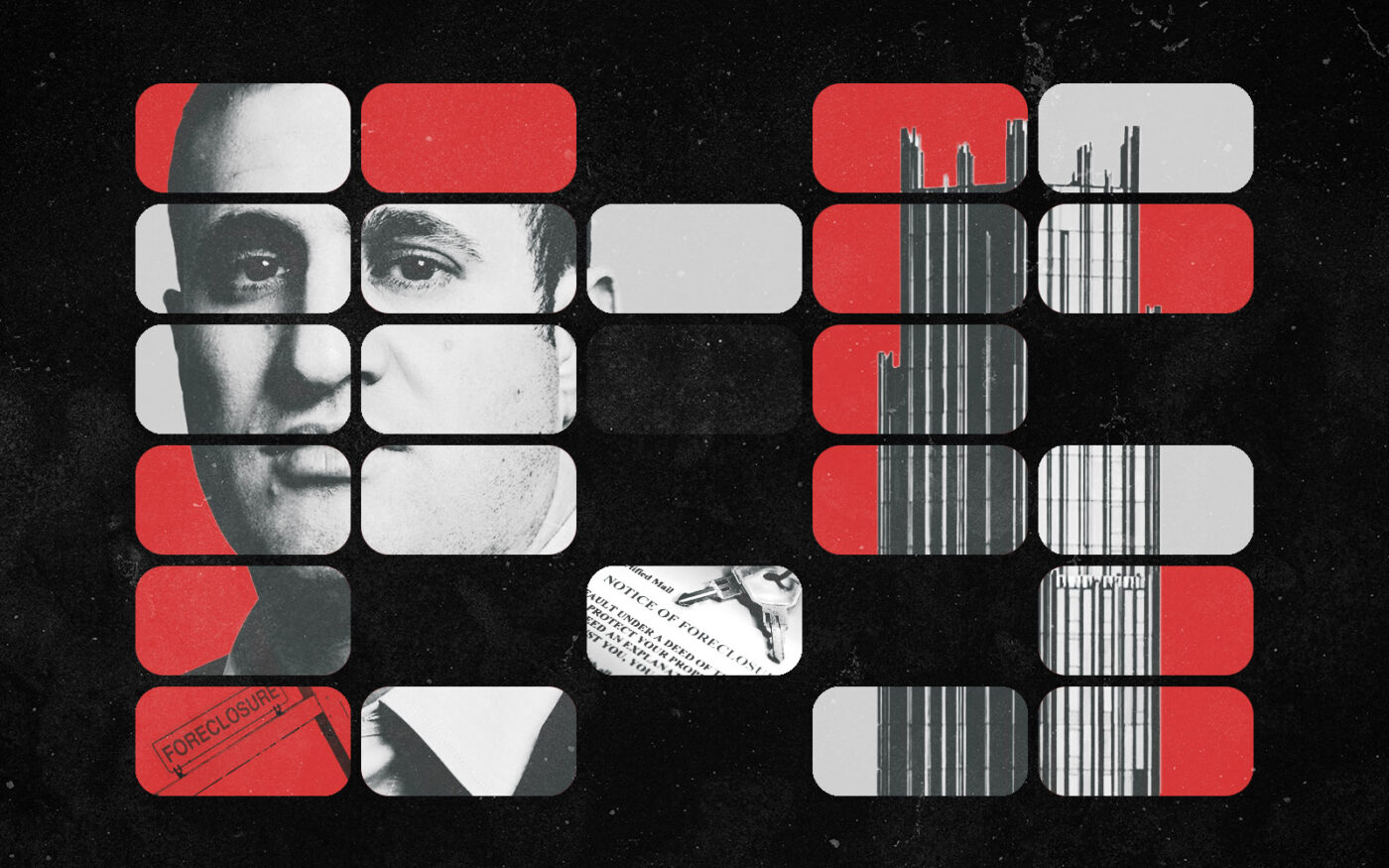Few new towers in the city have garnered as much attention as 9 DeKalb Avenue.
Much of the conversation revolves around The Brooklyn Tower’s exterior, with its Darth Vader vibe. It’s been called a “futuristic sinister stalagmite” and a “brooding monolith.” But within the real estate industry, the questions have concerned its troubled finances since Michael Stern’s JDS Development defaulted on a hefty mezzanine loan.
Here are some answers.
What happened at 9 DeKalb?
Stern’s JDS Development and Joseph Chetrit’s Chetrit Group purchased the lot at 9 DeKalb Avenue in 2014. The following year they purchased the Dime Savings Bank building next door for $90 million, then kicked off construction at the assemblage. Stern bought out Chetrit in 2018 for $60 million to take sole control of the project.
The 1,067-foot tower was originally projected for completion in 2022. It includes 130,000 square feet of mostly occupied retail space, 417 rental units and 143 residential condominiums.
But Stern defaulted on a $240 million mezzanine loan tied to the property, and the holder of that debt, Silverstein Properties, began a UCC foreclosure.
Who are the lenders on the building?
The project has had a handful of them over the years.
In 2016, Fortress Investment Group and Kushner Companies each provided loans. Fortress’ was a $115 million senior mortgage. Kushner’s was considered a mezzanine loan, and the amount was undisclosed. Mezzanine loans are secured by a property’s ownership entity, not by the property itself, so they are not publicly recorded.
Both lenders were out of the picture a year later, when the development duo scored a $135 million loan from Bank of the Ozarks (now Bank OZK) and Melody Finance.
As projects rise, they become more valuable, allowing their developers to borrow more against them and fund the continuing work. To that end, in 2019 JDS nabbed a $664 million loan package, including a $424 million senior mortgage from Otera Capital and a $240 million mezzanine loan from Larry Silverstein’s Silverstein Capital Partners.
This February, Silverstein purchased the senior debt on the tower. At the time, it looked like a move to ease JDS’s debt service payments by consolidating the debt. But Silverstein may have been looking to protect its position as a secondary lender by buying the senior debt.
A spokesperson for Silverstein confirmed that the company also issued a junior mezzanine loan on the property, and that all three loans are in maturity default, meaning they were not repaid when they came due. Commercial real estate loans are typically interest-only.
Why did Stern default on the loans?
It’s not entirely clear what drove JDS to default on the debt, but rising interest rates are a leading suspect. Condo sales may also be behind projections. Downtown Brooklyn residential towers have proliferated since a 2004 rezoning, and competition among rentals and condos is fierce.
Stern looked to offload his tower’s rental portion last year, but it has not been sold. There has been speculation that the rental component was not complete at the time, complicating any potential sale.
What’s the status of the residential spaces at the building?
As of last August, JDS had sold 22 condo units at the property, according to a condo offering plan. Douglas Elliman Development Marketing has been handling sales. Elliman lists eight units, with asking prices from $950,000 to $7.85 million. StreetEasy lists 11, with one of them marked in contract.
The prices are similar to those at supertalls in Manhattan. A 440-square-foot studio at the building sold for $905,000, according to StreetEasy — $2,057 per square foot. A penthouse is priced above $2,600 per square foot.
Two units are listed for rent: a studio for $4,500 per month and a one-bedroom for $5,000.
What’s next for the property?
Silverstein’s UCC foreclosure auction is scheduled for June 10. Typically, mezzanine foreclosure auctions draw little interest from anyone beyond the mezzanine lender, as the winner is on the hook for the senior debt.
A likely scenario is that Silverstein makes a credit bid — bidding what it’s owed on the mezzanine loan — on the entity that owns the property. It would then seize control of 9 DeKalb.
Stern, however, is known as one of the toughest dealmakers in the industry, and might not be resigned to relinquishing control of Brooklyn’s tallest tower. He could file a lawsuit or put the ownership entity into bankruptcy to stop the auction, buying time to find new financing or to work something out with Silverstein.
UCC foreclosures can be carried out much faster than foreclosures on actual property, but all signs still point to a battle as long as the tower itself.
Stern did not comment for this story.
Read more



